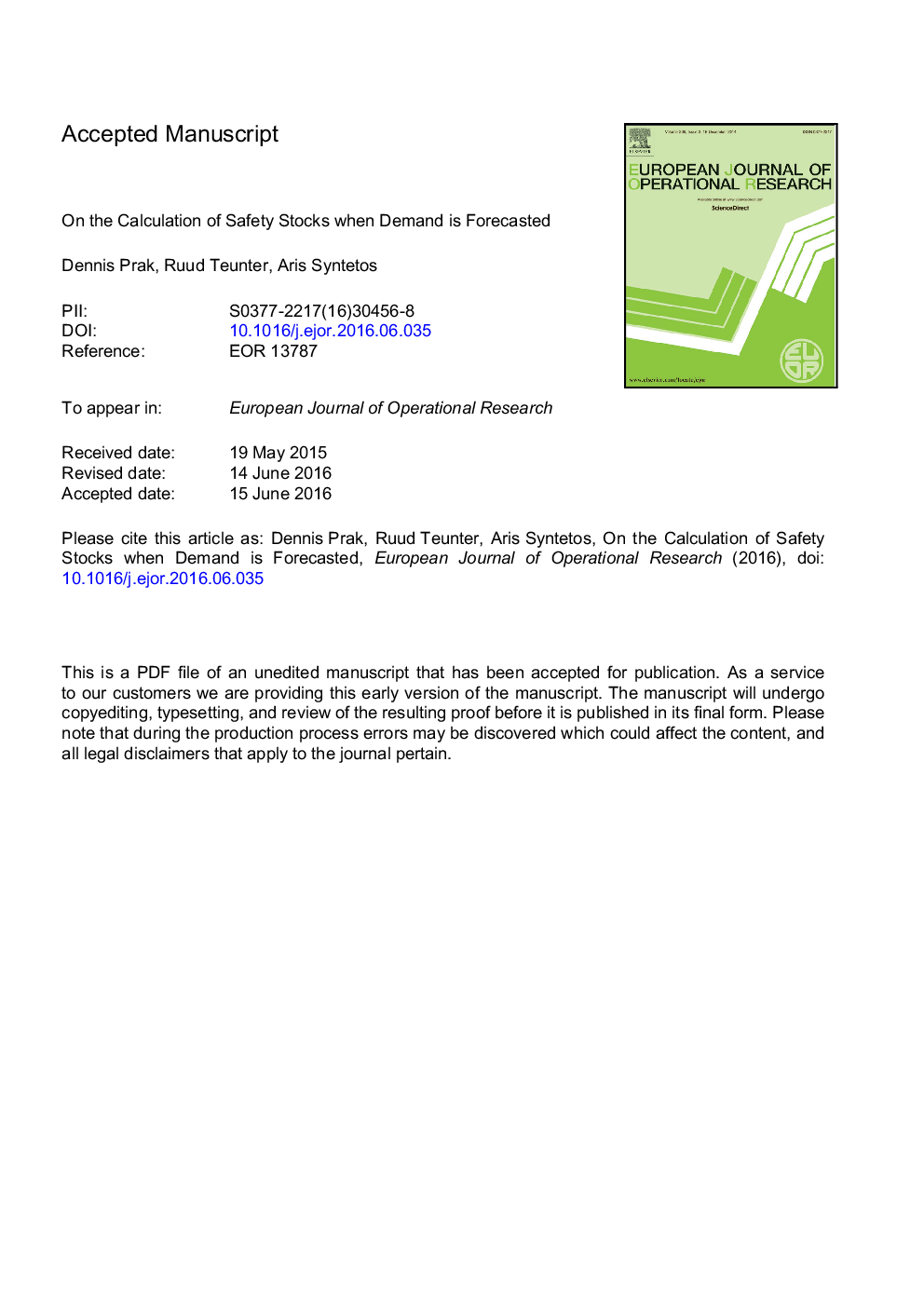| Article ID | Journal | Published Year | Pages | File Type |
|---|---|---|---|---|
| 4960220 | European Journal of Operational Research | 2017 | 24 Pages |
Abstract
The inventory control literature generally assumes that the demand distribution and all its parameters are known. In practical applications it is often suggested to estimate the demand variance either directly or based on the one-period ahead forecast errors. The variance of the lead time demand, essential for safety stock calculations, is then obtained by multiplying the estimated per-period demand variance by the length of the lead time. However, this is flawed, since forecast errors for different periods of the lead time are positively correlated, even if the demand process itself does not show (process) auto-correlation. As a result these traditional procedures lead to safety stocks that are too low. This paper presents corrected lead time demand variance expressions and reorder levels for inventory systems with a constant lead time where demand fluctuates around a constant level. Firstly, we derive the exact lead time forecast error of mean demand conditional on the true demand variance. Secondly, we derive for normally distributed demand the correct reorder level under uncertainty of both the demand mean and variance. We show how the results can be implemented in inventory models, and particularly discuss batch ordering policies combined with moving average and exponential smoothing forecasts. We find that traditional approaches can lead to safety stocks that are up to 30 percent too low and service levels that are up to 10 percent below the target.
Related Topics
Physical Sciences and Engineering
Computer Science
Computer Science (General)
Authors
Dennis Prak, Ruud Teunter, Aris Syntetos,
